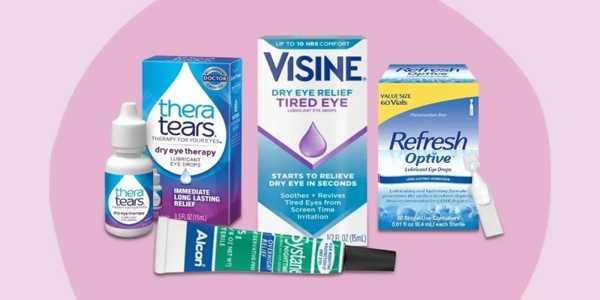How To Build An Effective Oral Care Routine (Backed By Dentists)
Ever wonder why some people always seem to have perfect teeth while others struggle despite brushing every day? It's not just genetics or luck—it's often about having the right oral care routine in place.
And no, brushing twice a day isn’t the whole story.
Dentists agree that maintaining a healthy mouth takes a little more thought, a bit of consistency, and the right techniques. Here's everything you need to know about building a dentist-approved routine that actually works.
Why Oral Hygiene Deserves More Attention Than You Think
Think brushing your teeth is only about a bright smile and fresh breath?
Let’s dig deeper.
Poor oral health isn't just a dental issue. Studies have linked gum disease with heart problems, diabetes, and even respiratory issues. Your mouth is the entry point to the rest of your body—so if something's off in there, it can ripple out to other areas of your health. So, whether you're trying to prevent cavities or simply want to maintain your teeth as you age, a strong daily routine is where it starts.
Morning Routine: More Than Just Brushing
Start With a Rinse (Optional but Helpful)
If you’ve had a dry mouth overnight, a quick rinse with water or an alcohol-free mouthwash can help. It clears out some of the overnight bacteria and wakes up your mouth for the day.
Use the Right Toothbrush (Yes, It Matters)

Soft-bristled brushes are what dentists recommend. They’re gentle on gums but still tough on plaque.
Electric toothbrushes often do a better job than manual ones because they use consistent motion and pressure. Some even have built-in timers or pressure sensors to protect your gums.
Two Minutes, Twice a Day
This isn’t just a slogan. Most people don’t brush long enough.
Dentists suggest breaking your mouth into four zones—top left, top right, bottom left, bottom right—and spending 30 seconds on each. Make sure to angle your brush at 45 degrees to your gumline, and brush with small circular motions.
Don’t Forget Your Tongue
Your tongue holds a lot of bacteria. Use a tongue scraper or the back of your toothbrush to gently clean it.
This one step can make a big difference in reducing bad breath.
Flossing: Non-Negotiable (And No, It Doesn’t Have to Be a Hassle)
Flossing isn’t just for removing food particles.
It helps clean where your toothbrush can’t reach—between the teeth and under the gumline. This is where gum disease often starts.
Tips for better flossing:
• Use about 18 inches of floss, winding most around your middle fingers.
• Gently slide it between your teeth using a sawing motion.
• Curve the floss into a C-shape around each tooth and go slightly below the gumline.
If traditional floss is tough to handle, try floss picks or a water flosser. They’re just as effective when used properly.
Mouthwash: A Bonus or a Must?

Here’s the truth—mouthwash is not a substitute for brushing or flossing.
But it can be a powerful add-on, especially if you choose the right one. Look for:
• Fluoride-based rinses if you want to strengthen enamel
• Antiseptic rinses (with chlorhexidine or essential oils) for reducing gum inflammation
Use it after brushing and flossing, not before.
And don’t eat or drink for 30 minutes after rinsing to let it do its job.
Midday Check-Ins: Small Habits That Go a Long Way
You don’t need to carry a toothbrush everywhere, but there are things you can do during the day to keep your mouth in good shape.
Drink More Water
Water helps wash away food particles and bacteria, especially after meals. It also helps neutralize acids in your mouth that could wear down enamel.
Chew Sugar-Free Gum
This isn’t just about fresh breath. Chewing gum stimulates saliva, which is your mouth’s natural defense against bacteria and acid.
Look for gums with xylitol—it’s a natural sweetener that’s been shown to reduce cavity-causing bacteria.
Avoid Constant Snacking
Snacking frequently—especially on sugary or starchy foods—feeds harmful bacteria. Try to limit snacks between meals, or at least rinse your mouth with water afterward.
Nighttime Routine: The Real MVP
If you’re going to skip brushing once a day (not recommended!), make sure it’s not before bed.
Why? Because saliva production slows down while you sleep, and your mouth becomes a playground for bacteria.
Here’s how to end your day the right way:
• Brush thoroughly using fluoride toothpaste. Go slow. Don’t rush just because you’re tired.
• Floss—again. Yes, even if you already did in the morning. Nighttime is when flossing does its best work, removing the day's build-up.
• Rinse with mouthwash. Let it work overnight while your mouth is less active.
How Often Should You Replace Your Toothbrush?
This one’s easy to overlook.
Dentists recommend replacing your toothbrush or electric brush head every 3 to 4 months—or sooner if the bristles are frayed. Worn bristles don’t clean well and can be harsh on your gums.
Extra Care: When You Need to Go Beyond the Basics
For some people, a standard routine might not be enough. If you deal with any of the following, talk to your dentist about a tailored care plan:
• Braces or retainers
• Gum sensitivity
• Chronic bad breath
• Dry mouth
• Frequent cavities despite regular brushing
Sometimes, adding prescription toothpaste, a different kind of mouthwash, or an antibacterial gel might be necessary.
What Dentists Say About Timing Your Oral Care
Here’s a surprising tip: don’t brush immediately after acidic meals like citrus fruits, soda, or tomatoes. The acid softens enamel, and brushing too soon can do more harm than good.
Wait about 30 minutes and rinse with water in the meantime.
Signs Your Routine Is Working (Or Not)
You don’t need to guess whether your oral care routine is effective. Here’s what to watch for:
Positive Signs:
• Gums look pink and feel firm
• No bleeding when brushing or flossing
• Fresh breath most of the time
• Teeth feel smooth and clean
Warning Signs:
• Bleeding gums
• Bad breath that won’t go away
• Tooth sensitivity or pain
• White spots on teeth (early signs of decay)
If you notice any red flags, don’t wait for your next checkup—book a visit right away.
Ready for a Healthier Smile?
Oral care isn’t just about avoiding cavities—it's about feeling confident, staying healthy, and making sure your teeth last a lifetime. With just a few smart habits and a little consistency, you can create a dentist-backed routine that works for your lifestyle. So start small, stay committed, and let your smile show the results.





